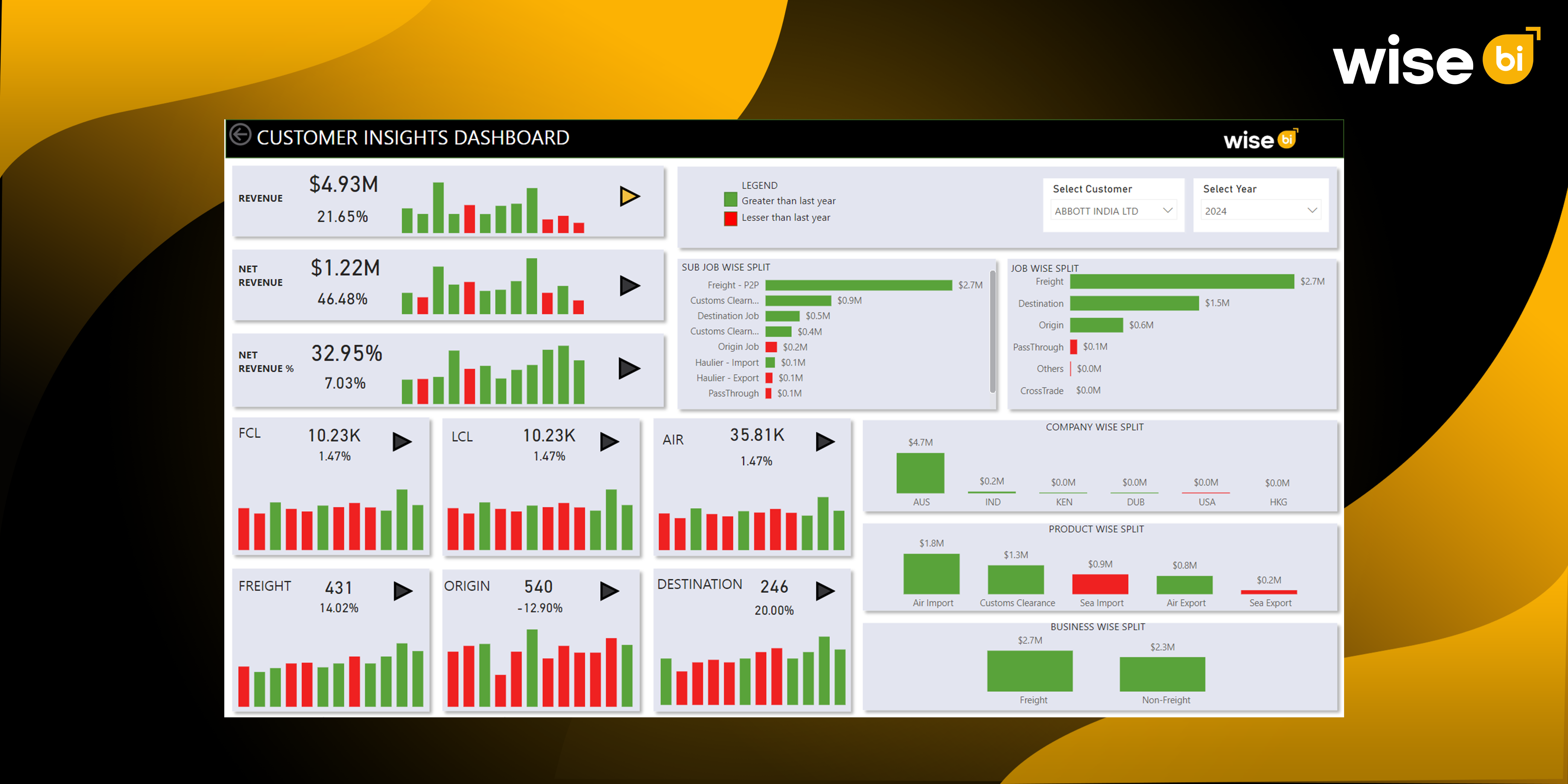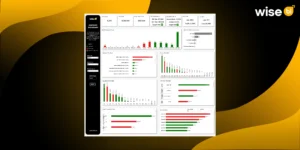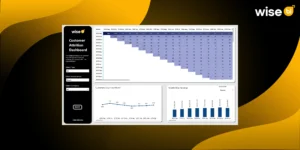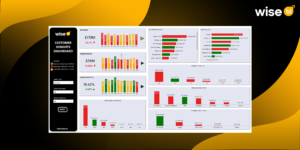Are you still running your freight forwarding business on disconnected systems?
If so, you’re not alone.
More than 65% of freight forwarders continue to use separate platforms to manage shipments, invoicing, and customer communication, which results in delayed decisions and missed opportunities. At the same time, 92% of logistics customers want real-time shipment tracking. This disconnect has a direct impact on operational efficiency, as well as client satisfaction and retention.
By combining data from TMS, WMS, CRM, and finance systems, the BI dashboard solution bridges this gap and provides a comprehensive, up-to-date view of operations. BI Dashboards for financial tracking, operational performance, and customer analysis enable freight forwarders to monitor service levels, identify inefficiencies, and make data-driven decisions.
Let’s explore how business intelligence has evolved into a strategic advantage for both freight forwarders and logistics professionals.
What is a BI Dashboard?
A BI dashboard is a visual tool that consolidates data from multiple sources into a single, unified display. It allows users to track key performance indicators (KPIs), monitor trends, and receive real-time insights using charts, graphs, and reports.
In freight forwarding and logistics, a business intelligence dashboard can deliver on-time delivery rates, shipment delays, route performance, client profitability, and financial information all in a single view. This allows managers and teams to identify issues immediately, make data-driven decisions, and increase overall productivity without having to jump between platforms or spreadsheets.
Why Do Freight Forwarders Require a BI Dashboard?
Freight forwarders manage complex operations across multiple systems, frequently dealing with inefficiencies, missed insights, and delayed decisions. By consolidating data and providing a centralized view of operations, BI dashboards enable teams to track performance, identify gaps, and make faster, more informed decisions. This visibility is important for getting control over daily operations, tracking KPIs, and increasing overall efficiency.
1. Provides Operational Visibility and Control
One of the biggest advantages of BI dashboards is the level of operational visibility they create. Freight forwarders gain the ability to monitor on-time delivery rates across carriers and trade lanes, track delays by port or region, measure lead times from booking to delivery, and analyze shipment volumes by commodity, customer, or season. Instead of reacting to problems after they occur, managers can proactively address delays with the clarity of real-time data.
This clarity allows operations to shift from reactive to proactive control. By consolidating data into a single dashboard, teams can avoid switching between spreadsheets, emails, and outdated software. This improved workflow allows for faster decisions, fewer errors, and more strategic resource allocation.
2. Smarter Decision-Making Through Customer Insights
Customer expectations in logistics have evolved. They demand more than just shipment movement; they want insight, responsiveness, and personalized service. That’s where BI-driven customer analysis becomes essential.
With Wise BI’s Customer Analysis Dashboard, enable freight forwarders to go beyond standard metrics and ask questions.
- Which customers contribute the most revenue or margin?
- What are the most frequently used services (road, sea, and air), and why?
- Which clients are responsible for the highest number of service issues or need exception handling?
- Are there seasonal or regional fluctuations in customer demand?
These insights enable forwarders to tailor their services. If a high-value customer frequently transports perishable goods, you can provide a cold-chain logistics solution in advance. If another client has frequent customs issues, you can deliver trade compliance services or document checks. This level of personalization helps build trust, which in logistics directly correlates with retention and referrals.
3. Simplifying Internal Processes
Beyond customer-facing insights, BI dashboards simplify internal operations by breaking down silos across departments. Sales, operations, and finance often work with separate data sets, leading to missed invoices, duplicated tasks, and inconsistencies in service delivery. Along with a custom BI dashboard, teams can see aging invoices linked directly to shipment histories, track sales performance against actual freight moved, evaluate profit margins across routes or carriers, and monitor warehouse dwell times alongside inventory turnover.
By identifying inefficiencies such as unprofitable routes, underutilized assets, or overstaffed branches, business intelligence allows you to standardize processes, reduce overhead, and improve service delivery across the department.
4. Improving Customer Experience with Real-Time Insights
Transparency and responsiveness shape the customer experience in logistics services. Waiting for delayed updates or receiving incorrect ETAs is no longer acceptable. BI dashboards enable freight forwarders to provide real-time insights and improve service levels. Customers can be informed immediately if their shipments are delayed due to weather, port congestion, or carrier issues. They can also obtain reports that highlight on-time delivery rates, service quality, and shipment volumes, with the ability to tailor reporting to their unique requirements. This level of proactive engagement positions freight forwarders as trusted partners who deliver clarity and reliability rather than uncertainty.
This level of proactive reporting transforms customer interactions, establishing freight forwarders as trusted partners rather than just service providers.
5. Turning Insights into Actionable Decisions
At its core, the BI dashboard allows freight forwarders to make more informed, data-driven decisions. By centralizing data and providing actionable insights, business intelligence helps:
- Optimized route planning and carrier selection
- Identification of high- and low-performing trade lanes
- Improved financial transparency and profitability analysis
- Increased operational efficiency across departments.
Freight forwarders can now respond to challenges faster, allocate resources strategically, and maintain high service standards, all while lowering operational errors and costs.
Conclusion
Freight forwarding is no longer just about moving shipments; it’s about managing and acting on data effectively. In today’s competitive industry, business intelligence gives freight forwarders the visibility, agility, and actionable insights needed to stay ahead.
Investing in BI enables operational efficiency, more precise customer insights, and data-driven collaboration, helping your business simplify processes, make smarter decisions, and strengthen client relationships.
Contact us today to explore how a logistics BI solution can enhance customer experience and drive long-term growth.




